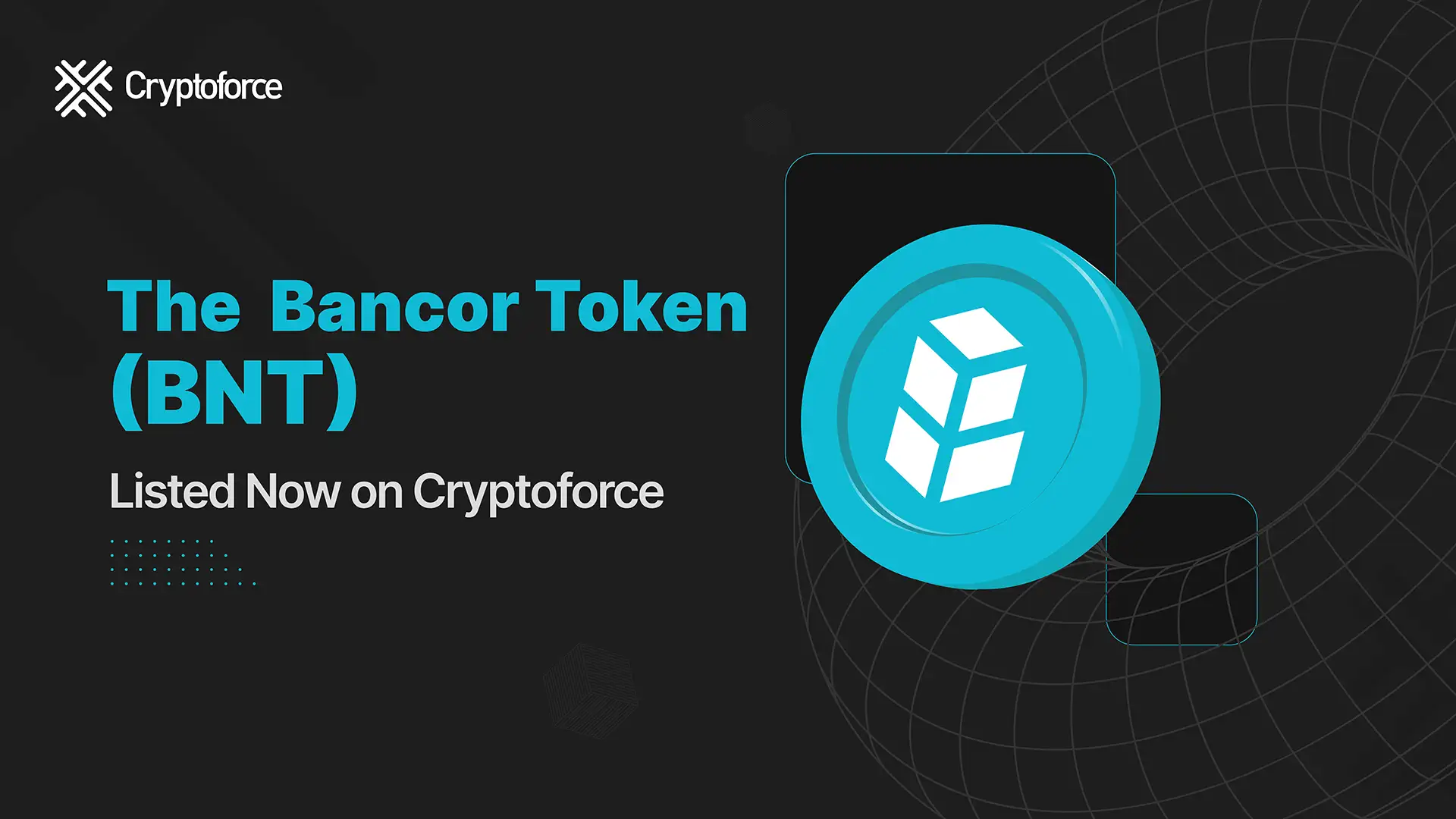What is Bancor?

Bancor is a popular choice among investors looking to trade altcoins. However, before you Trade BNT, it is essential that you know what you are investing in. Let's find out what's Bancor and how it works.
Bancor is a community-driven, peer-owned, and community-governed decentralized exchange protocol. You get rewarded for supplying the app with cryptocurrency tokens, and the app then utilizes those tokens to enable trades between users all over the world. The Bancor protocol's main selling point is that it protects your crypto tokens from impermanent loss when you stake them on its platform.
Bancor is the only decentralized staking platform that permits single-sided deposits to generate passive revenue. Using Bancor, holders of Wrapped Bitcoin (WBTC), Ether (ETH), Polygon token (MATIC), and Chainlink (LINK) may stake their tokens for monthly returns.
Bancor Network Token (BNT) is an ERC20 token explicitly developed for use with the Bancor network. It is built on Ethereum and offers a wide range of applications inside the Bancor ecosystem.
The BNT token is paired with every other token on the Bancor network. This includes the Ethereum token and the Link token, among others.
When using the Bancor network, users may stake their BNT in any trading pair pool to receive rewards and a cut of trading fees. The highest returns may be obtained by staking BNT with another cryptocurrency, such as ETH, on the Bancor exchange. In return for staking BNT, you are eligible for 70% of all rewards. Staking Ethereum or any other coin in this pair, on the other hand, only pays 30%.
BNT is a utility coin for voting and governance as well. Bancor platform upgrades and improvements are subject to a vote by holders and staking participants of the BNT token.
Bancor's goal with its AMM service is to encourage consumers to pool their assets so that it may be managed automatically. Each pool has two components: a token and a reserve of BNT.
When a user deposits coins, they receive a new token called pool token. The user can get back the initial amount locked in the protocol by using this token. When two tokens are exchanged, BNT tokens are employed as a kind of intermediate currency.
In particular, Bancor has a "pool lock" feature that lets users keep a single token in a certain pool (as opposed to a pair). On some AMMs, for example, a user may be requested to lock up pairs of tokens in specific proportions to one another in order to gain access to the pool.
A user on Bancor could only deposit ETH or DAI into a pool that included both cryptocurrencies. A user on Uniswap, on the other hand, would have to put up both ETH and DAI as collateral. However, all Bancor pools require users to deposit BNT.
How is Bancor different?
With Bancor V3, the project introduced several new features. These include:
- Instant Impermanent Loss Protection:Bancor 3 provides complete impermanent loss protection right from the start. As previously explained, with the previous version of Bancor, 100% impermanent loss protection is only feasible if you lock up your tokens for at least 100 days. In contrast, this is accomplished instantly using Bancor 3.
- Dual Sided Rewards:Since the release of Bancor 3, more protocols have been given permission to reward participants in their pools. In light of this, depositors are entitled to dual-sided incentives in the form of BNT and the token they choose to stake. Both of these incentives are safe from impermanent loss.
- Omnipool:With Bancor 3, users may pool their BNT for staking and receive rewards from the entire Bancor ecosystem. This streamlines the rewards system by doing away with the requirement to transfer BNT across pools. It also mitigates the expenses you bear on the network whenever you buy, sell, or stake your tokens.
- Infinity Pools:Since Bancor liquidity pools do not have a minimum deposit requirement, anyone can contribute any amount they would like whenever they choose.
How many BNT tokens are in circulation?
The supply of the Bancor Network Token (BNT) is flexible because the protocol mints and burns tokens to keep Bancor pools liquid for trading. Protocol-owned trade liquidity receives swap fees from the trading volume, causing the protocol to accumulate more BNT over time. When LPs stake the same amount of their own BNT, the new balance of BNT in the protocol is burned in exchange for pool tokens. Due to swap fees, more BNT is burned in the end than the protocol gave out in the beginning. This extra BNT is then burned to cover the cost of impermanent loss, which makes the total amount of BNT less than in the long run.
maximum supply of BNT tokens is 190,068,122.
Network Security
Bancor is one of the longest-running and most-audited crypto projects. Top auditors like Certik, PeckShield, and Halborn have given it perfect scores. DeFiSafety also gave Bancor a safety score of 96% in 2021, which was one of the highest scores ever.
Founders
Bancor was founded by Galia Benartzi. Galia is the co-founder of both Particle Code and Mytopia, the first social gaming startup for cellphones, and she has extensive experience in the mobile app industry. She also co-founded Summit Powder Mountain and was a Venture Partner at Peter Thiel's Founder's Fund.
Where Can You Buy BNT?
BNT is available on the licensed cryptocurrency exchange CryptoForce and several other national and international exchanges.
Disclaimer: Cryptocurrencies are highly volatile and subject to market, technical, and regulatory risks. Crypto trading requires one’s own diligence, and Cryptoforce will not be responsible for any losses incurred. Any information provided here should not be regarded as Cryptoforce’s technical or financial advice.